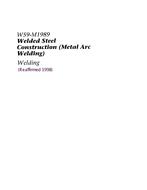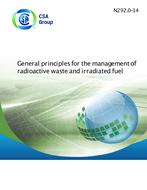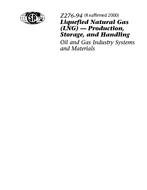Preface
This is the fourth edition of SPE-1000, Model Code for the field evaluation of electrical equipment. It supersedes previous editions published in 2009, 1999, and 1994. Significant changes in this edition include new requirements for the field evaluation of energy usage metering devices, high-voltage equipment, photovoltaic modules, wind turbines, inverters, and industrial control equipment. This Model Code is based upon guidelines for special inspections. These guidelines have been in effect for many years with a good safety record. The Canadian Advisory Council on Electrical Safety strongly supports the continuation of special inspections of electrical equipment, with the stipulation that the requirements be formally published.
Scope
1.1 1.1.1 This Model Code provides marking and test/construction requirements for the field evaluation of electrical equipment by an inspection body, where certification of that equipment is impracticable or otherwise unavailable. 1.1.2 Field-evaluated equipment found to be in conformity with the requirements of this Model Code is considered to be acceptable to the AHJ. 1.1.3 Notwithstanding the requirements of Clauses 1.1.1 and 1.1.2, field evaluation is not intended to serve as a substitute for certification. 1.2 The following are examples of where this Model Code applies: a) custom-built equipment for special applications; b) equipment manufactured on a non-repetitive basis; c) equipment sold in quantities of not more than 500 on a national basis, per model, per year, per inspection body; d) equipment not obtainable as “certified” under a regular certification program; e) equipment already installed or ready for use on-site and awaiting acceptance by the AHJ; f) complete systems or subassemblies that are all available for examination and testing during the evaluation process; and g) other electrical equipment as determined by the AHJ. Note: Where it is unclear or there is uncertainty as to whether the electrical equipment is to be field evaluated under the classifications of this Clause, the AHJ should be consulted for clarification. 1.3 This Model Code applies where the requirements are supplemented by requirements of particular equipment Standards, where referenced, and the installation requirements of the Canadian Electrical Code, Part I, as applicable. 1.4 This Model Code applies to equipment that may be evaluated at a client’s facilities or at other specified locations, including the location of equipment installation. 1.5 This Model Code is not intended to apply to the re-evaluation of equipment that has been rejected due to the results of a previous evaluation conducted by a certification organization through any other existing certification service. 1.6 This Model Code does not apply to the field evaluation of a) wire and cable products; b) wiring devices; c) equipment for use in hazardous locations; d) medical electrical equipment and systems; e) components* that will require further evaluation as part of a complete assembly, such as switches, relays, and timers; f) equipment connected to line voltage in excess of 46 kV; g) manlifts, elevators, climb assists and similar systems (other than their associated control panels); and h) any equipment that is not permitted to be field evaluated as directed by an AHJ (such as air-cleaning equipment that intentionally produces ozone). * Special inspection/field evaluation only applies to equipment that is capable of being connected to the supply in accordance with the Canadian Electrical Code, Part I. 1.7 General requirements applicable to this Model Code are given in CAN/CSA-C22.2 No. 0, General Requirements – Canadian Electrical Code, Part II. 1.8 In this Model Code, “shall” is used to express a requirement, i.e., a provision that the user is obliged to satisfy in order to comply with this Model Code; “should” is used to express a recommendation or that which is advised but not required; and “may” is used to express an option or that which is permissible within the limits of this Model Code. Notes accompanying clauses do not include requirements or alternative requirements; the purpose of a note accompanying a clause is to separate from the text explanatory or informative material. Notes to tables and figures are considered part of the table or figure and may be written as requirements. Annexes are designated normative (mandatory) or informative (non-mandatory) to define their application. 1.9 In accordance with Clause 1.8, this Model Code has been written in mandatory language to facilitate its adoption where users of the Model Code or regulatory authority wish to do so.
Product Details
- Edition:
- 4th
- Published:
- 05/01/2013
- ISBN(s):
- 9781554919987
- Number of Pages:
- 121
- File Size:
- 1 file , 4.4 MB
- Redline File Size:
- 2 files , 7.2 MB
- Product Code(s):
- 2421979, 2421979


